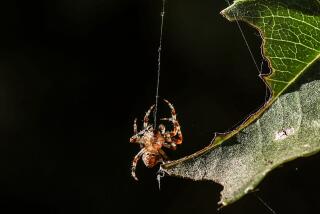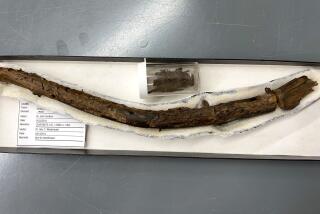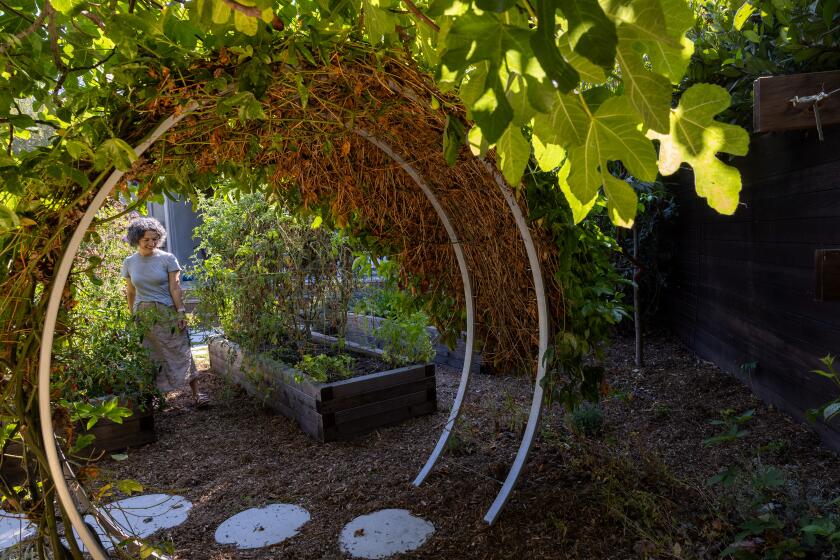A Weaver in Our Midst
A friend with sharper eyes than ours was the first to locate the Argiope aurantia and her splendid orb web between a small azalea and an agapanthus, just a foot from the sidewalk of our street. This may say more about our limited powers of observation than the visual acuity of our friend, for these are the largest and most spectacular of the hundred or so species of spiders that weave their webs in Southern California.
Since this discovery, we have been learning a lot about spiders. Our sharp-eyed friend has borrowed just about everything there is on the subject in the public library where she lives. And we have struck up a telephone acquaintance with Charles Hogue, curator of entemology at the Natural History Museum of Los Angeles County. It was Hogue who first helped us identify this visitor. He called her a golden orb weaver. Others identify her as a golden garden spider. A weaver she surely is, for the web is a miracle of craftsmanship. She sat at its center, immobile, head down, for weeks, waiting for a careless grasshopper or other insect to get caught. As far as we know, this never happened. We surely would have seen the captured creature, neatly stitched in place. These orb ladies are just as quick and efficient about sewing up prey as they are in weaving their webs.
Hogue is a strong advocate of spider rights. “I hate people who go around bashing spiders,” he confided. Spiders eat more bugs than birds do and contribute so much to a constructive balance of garden life that Hogue brings home to his garden any stray spider eggs he finds hanging around in their neat, and often very tough, little white sacs.
Our salubrious climate assures year-round spider life, which is good news for people if bad news for insects. But this is the time of year for the most spectacular orb engineering as webs are built to capture food for egg-laying females before the winter closes in. From August to October, the great constructions are elaborated across walks, between trees, filigrees of the mysterious filament whose delicacy and toughness cannot be reproduced by humankind. Some of the weavers are frugal creatures, eating old webs so that they can recycle the protein complex when they weave a new one.
Not all spiders are limited to the one-year life span of our golden orb weaver. Some tarantulas and other trap door spiders live for a decade or longer, and others for at least two or three years.
Hogue and his associates at the museum have a lot of facts and figures to help humans get over their spider phobias. There are, it seems, only two spiders with which intimate contact is not recommended, the sleek black widows, with a neurotoxic venom that can kill but rarely does, and the South American violin spider, an indoor dweller with unusually long legs, a pattern of six “eyes” on the anterior of its carapace, with a venom that can create a wound hard to heal.
“My advice is to encourage spiders around the house and as part of the landscape,” Hogue told us. “Don’t destroy the webs. Don’t spray. Leave them alone.”
Our story has an uncertain ending, for the lovely golden orb weaver disappeared a few days ago. She may have fallen victim to a bird or animal, but there are no signs of struggle in the perfectly preserved web between the azalea and the agapanthus. We cling to the possibility, raised by Hogue at the museum, that she may be busy in the bushes laying eggs before her year-long lease on life comes to an end.
More to Read
Sign up for The Wild
We’ll help you find the best places to hike, bike and run, as well as the perfect silent spots for meditation and yoga.
You may occasionally receive promotional content from the Los Angeles Times.






